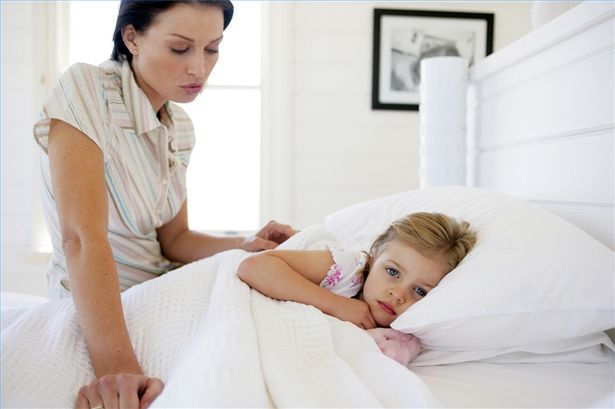Lesson 1: Clinical Disorders – Part D
PART D
Specific Sleep Disorders
Problems with sleep can be due to lifestyle choices and can result in problem sleepiness—that is, feeling sleepy at inappropriate times. Environmental noise, temperature changes, changes in sleeping surroundings, and other factors may affect our ability to get sufficient restful sleep. Short-term problem sleepiness may be corrected by getting additional sleep to overcome the sleep deficit. In other cases, problem sleepiness may indicate a sleep disorder requiring medical intervention. Alcohol abuse can cause or exacerbate sleep disorders by disrupting the sequence and duration of sleep states. Alcohol does not promote good sleep, and consuming alcohol in the evening can also exacerbate sleep apnea problems.
Insomnia, the most prevalent sleep disorder, is characterized by an inability to fall asleep and/or by waking up during the night and having difficulty going back to sleep. Primary insomnia is more common in women than men and tends to increase with age. Short-term or transient insomnia may be caused by emotional or physical discomfort, stress, environmental noise, extreme temperatures, or jet lag. Transient insomnia may also result as a side effect of medication. Secondary insomnia may result from a combination of physical or mental disorders, undiagnosed or uncontrolled sleep disorders (that is, sleep apnea, restless legs syndrome, narcolepsy, and circadian rhythm disorders), and effects of prescription or non-prescription medications. Treatment differs for primary and secondary causes of insomnia. Treatment may include following a specific night-time routine, improving one’s sleep environment, reducing caffeine and alcohol intake, or reducing afternoon napping. Pharmacological treatments may alleviate symptoms in specific cases. Some individuals try to overcome the problem of insomnia by drinking alcoholic beverages. Alcohol inhibits REM sleep and the deeper, restorative stages of sleep, and, therefore, does not promote restful sleep.

Obstructive sleep apnea (OSA) is a potentially life-threatening disorder in which breathing is interrupted during sleep. Over 12 million North Americans have OSA. This condition may be associated with bony or soft tissue that limits airway dimensions and is made worse in the presence of excess fatty tissue. Repetitive episodes of no effective breath, very shallow breaths, or adequate breaths but with high airway resistance can occur 20 to 30 times per hour or more. These episodes cause temporary drops in blood oxygen and increases in carbon dioxide levels, which lead to frequent partial arousals from sleep. Limitations in upper-airway dimensions are typically associated with chronic loud snoring. The frequent arousals result in ineffective sleep and account for the chronic sleep deprivation and the resultant excessive daytime sleepiness that is a major hallmark of this condition. Additional effects include morning headaches, high blood pressure, heart attacks, heart-rhythm disorders, stroke, and decreased life expectancy. OSA also occurs in children and is generally related to enlarged tonsils or adenoids. It occurs equally often in boys and girls and is most common in preschool-age children.
Because many of the factors contributing to OSA appear to have significant genetic influences (such as bony dimensions of upper airways), genetic risk factors are likely important in the occurrence of OSA. Treatment for adult OSA can include behavioral therapy (losing weight, changing sleeping positions, and avoiding alcohol, tobacco, and sleeping pills), use of mechanical devices (continuous positive airway pressure to force air through the nasal passages, or dental appliances that reposition the lower jaw and tongue), and surgery to increase the size of the airway.
Restless legs syndrome (RLS) is a neurologic movement disorder that is often associated with a sleep complaint. People with RLS have unpleasant leg sensations and an almost irresistible urge to move the legs. Symptoms are worse during inactivity and often interfere with sleep. RLS sufferers report experiencing creeping, crawling, pulling, or tingling sensations in the legs (or sometimes the arms) that are relieved by moving or rubbing them. Sitting still for long periods becomes difficult; symptoms are usually worse in the evening and night and less severe in the morning. Periodic leg movements, which often coexist with restless legs syndrome, are characterized by repetitive, stereotyped limb movements during sleep. Periodic limb movement disorder can be detected by monitoring patients during sleep. Some people with mild cases of RLS can be treated by exercise, leg massages, and eliminating alcohol and caffeine from the diet. Others require pharmacological treatment, and to determine the right medication or combination of medications for the individual may take time. Estimates suggest that RLS may affect between 10 and 15 percent of the population.
Video: Restless Leg Syndrome
Narcolepsy is a chronic sleep disorder that usually becomes evident during adolescence or young adulthood and can affect both men and women. In the United States, it affects as many as 250,000 people although fewer than half are diagnosed. The main characteristic of narcolepsy is excessive and overwhelming daytime sleepiness (even after adequate nighttime sleep). A person with narcolepsy is likely to become drowsy or to fall asleep at inappropriate times and places. Daytime sleep attacks may occur with or without warning and may be irresistible. In addition, nighttime sleep may also be fragmented. Three other classic symptoms, which may not occur in all people with narcolepsy, are cataplexy (sudden muscle weakness often triggered by emotions such as anger, surprise, laughter, and exhilaration), sleep paralysis (temporary inability to talk or move when falling asleep or waking up), and hypnagogic hallucinations (dreamlike experiences that occur while dozing or falling asleep).
People with narcolepsy have difficulty staying awake, and in extreme conditions, narcoleptic episodes can occur during periods of activity. Narcolepsy is not the same as simply becoming tired or dozing in front of the TV after a day’s work.
REM sleep in people with narcolepsy frequently occurs at sleep onset instead of after a period of NREM sleep. Consequently, researchers believe that the symptoms of narcolepsy result from a malfunction in some aspect of REM sleep initiation. Some scientists believe that the immune system causes narcolepsy by attacking the nervous system (that is, an autoimmune response). In this view, exposure to an unknown environmental factor results in an immune response against nerve cells in the brain circuits that control arousal and muscle tone. The discovery of a narcolepsy gene in dogs indicates that genetic risk factors for narcolepsy may also be pertinent in humans. Studies of narcoleptic dogs suggest that altered receptors for a specific neurotransmitter in the hypothalamus can cause cataplexy and the other symptoms of narcolepsy. Many individuals with narcolepsy appear to have a deficiency of this hypothalamic transmitter. Although no definitive cure for narcolepsy, is available several treatment options alleviate various symptoms. Treatment is individualized depending on the severity of the symptoms, and it may take weeks or months for the optimal regimen to be determined. Treatment is primarily by medications, but lifestyle changes are also important.
Video: What is Narcolepsy?
 Parasomnias are sleep disorders that involve a range of behaviors that occur during sleep. These include sleepwalking, sleep talking, enuresis (bed-wetting), and sleep terrors, which are NREM disorders that occur early in the night. Many of the parasomnias (including sleepwalking, sleep talking, and sleep terrors) are more common in children. Children generally have no memory of such events, usually do not require treatment, and usually outgrow the disorder. Enuresis may respond to drug treatment, and like other parasomnias in children, it generally resolves as the child becomes older.
Parasomnias are sleep disorders that involve a range of behaviors that occur during sleep. These include sleepwalking, sleep talking, enuresis (bed-wetting), and sleep terrors, which are NREM disorders that occur early in the night. Many of the parasomnias (including sleepwalking, sleep talking, and sleep terrors) are more common in children. Children generally have no memory of such events, usually do not require treatment, and usually outgrow the disorder. Enuresis may respond to drug treatment, and like other parasomnias in children, it generally resolves as the child becomes older.
REM sleep behavior disorder is a parasomnia that occurs later in the night than NREM disorders. It differs from the parasomnias discussed previously because it usually affects middle-aged or elderly individuals. Frequently, sufferers will also have a neurological disorder. The temporary muscle paralysis that normally occurs during REM sleep does not occur in this disorder. Because the muscles are not paralyzed, individuals may act out potentially violent behaviors during sleep and cause injuries to themselves or their bed partners.